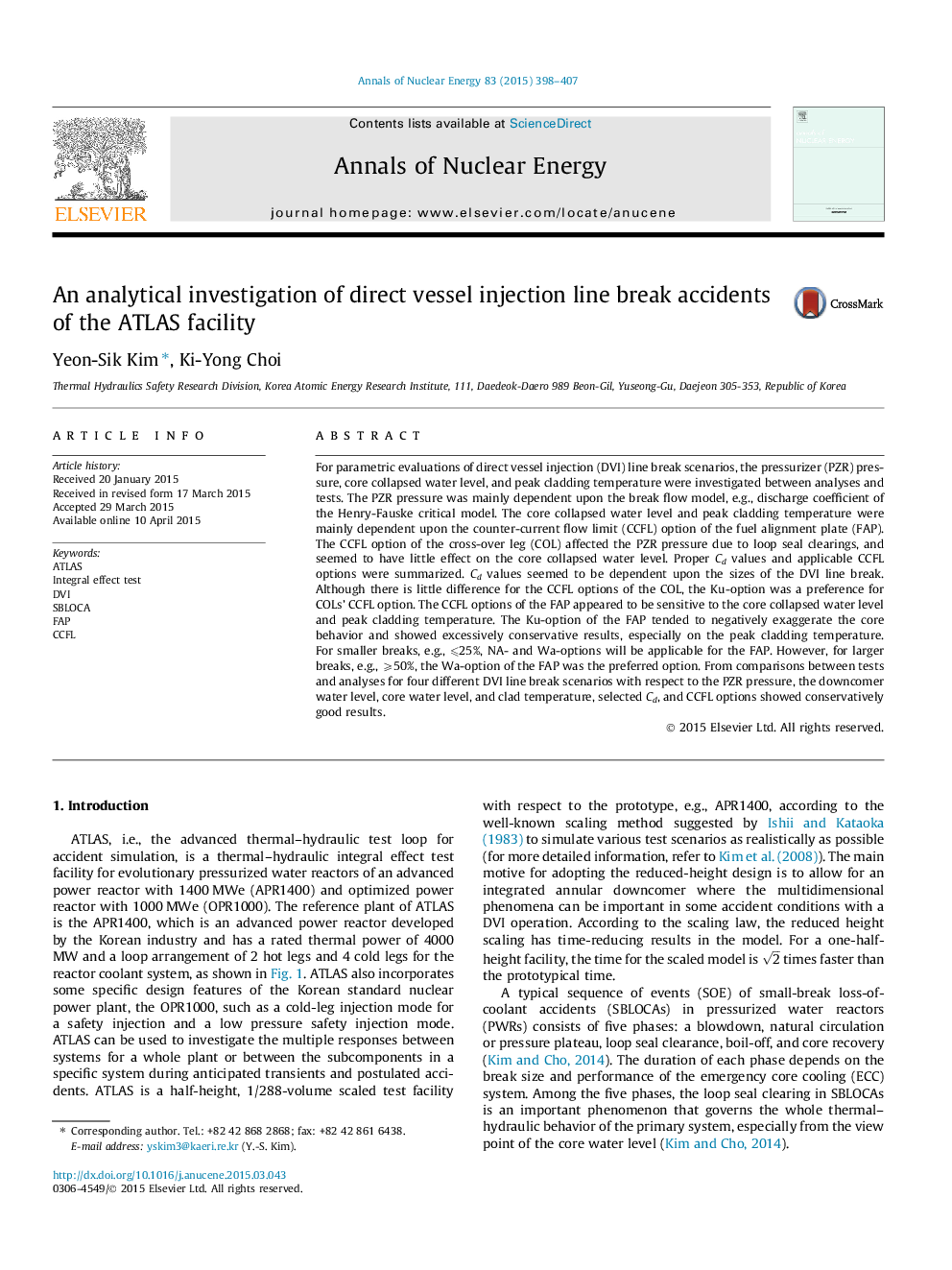| Article ID | Journal | Published Year | Pages | File Type |
|---|---|---|---|---|
| 8068499 | Annals of Nuclear Energy | 2015 | 10 Pages |
Abstract
For parametric evaluations of direct vessel injection (DVI) line break scenarios, the pressurizer (PZR) pressure, core collapsed water level, and peak cladding temperature were investigated between analyses and tests. The PZR pressure was mainly dependent upon the break flow model, e.g., discharge coefficient of the Henry-Fauske critical model. The core collapsed water level and peak cladding temperature were mainly dependent upon the counter-current flow limit (CCFL) option of the fuel alignment plate (FAP). The CCFL option of the cross-over leg (COL) affected the PZR pressure due to loop seal clearings, and seemed to have little effect on the core collapsed water level. Proper Cd values and applicable CCFL options were summarized. Cd values seemed to be dependent upon the sizes of the DVI line break. Although there is little difference for the CCFL options of the COL, the Ku-option was a preference for COLs' CCFL option. The CCFL options of the FAP appeared to be sensitive to the core collapsed water level and peak cladding temperature. The Ku-option of the FAP tended to negatively exaggerate the core behavior and showed excessively conservative results, especially on the peak cladding temperature. For smaller breaks, e.g., ⩽25%, NA- and Wa-options will be applicable for the FAP. However, for larger breaks, e.g., ⩾50%, the Wa-option of the FAP was the preferred option. From comparisons between tests and analyses for four different DVI line break scenarios with respect to the PZR pressure, the downcomer water level, core water level, and clad temperature, selected Cd, and CCFL options showed conservatively good results.
Related Topics
Physical Sciences and Engineering
Energy
Energy Engineering and Power Technology
Authors
Yeon-Sik Kim, Ki-Yong Choi,
